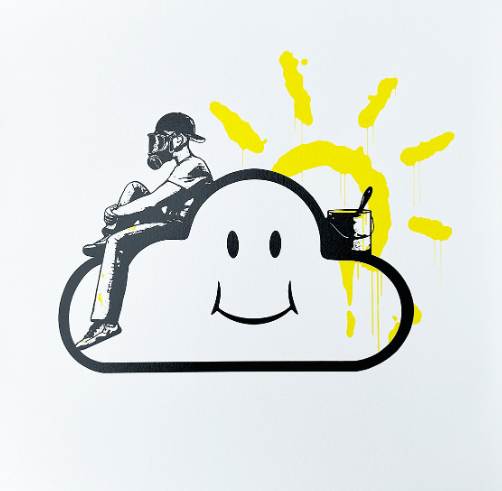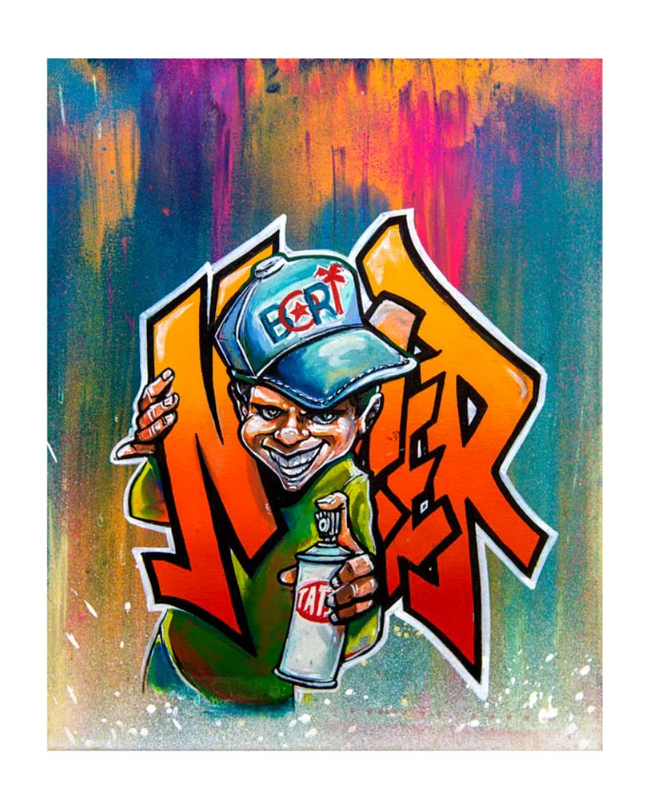
Smile
-

Nicer- Hector Nazario BORI PP Archival Print by Nicer- Hector Nazario
BORI PP Printer Proof Archival Print by Nicer- Hector Nazario Limited Edition Print on 290gsm Moab Entrada Fine Art Paper Pop Artist Modern Artwork. PP Printers Proof 2021 Signed & Marked PP Limited Edition Artwork Size 14x17 Archival Pigment Fine Art. The Significance of "BORI PP Printer Proof" in Street Pop Art & Graffiti Artwork Hector Nazario, known in the art world as "Nicer," presents a limited edition print that embodies the confluence of Street Pop Art and graffiti Artwork. His piece, titled "BORI PP Printer Proof," celebrates vibrant street culture captured through the lens of fine art. This archival print is not just a testament to Nazario's roots in the dynamic world of street art but also a nod to the evolution of graffiti as a respected form of contemporary art. Nazario's "BORI PP Printer Proof" is a limited edition archival print meticulously crafted on 290gsm Moab Entrada Fine Art Paper. The piece stands out for its use of archival pigment, which ensures the longevity of the print, preserving the bold colors and intricate details that characterize Nazario's work. Measuring an artwork size of 14x17, this print is both a collectible and a statement, reflecting the ethos of street art in a format traditionally associated with high-end fine art. The print is part of a very exclusive series, marked as a Printer's Proof (PP), which indicates a status of rarity and value beyond standard print editions. Printer's Proofs are traditionally retained by the printer for their records but, in this case, have been made available by the artist as a unique treasure for collectors. Each piece is signed by Nicer himself, adding a personal touch that connects the collector directly to the artist's vision. Exploring the Artist: Nicer - Hector Nazario Hector Nazario, or "Nicer," is a name that resonates with the legacy of New York's graffiti movement. His journey into the art world began on the streets, where graffiti's raw and rebellious nature provided a canvas for his creative expression. Over time, Nicer has transitioned from the temporary walls of the city to the permanence of fine art prints without losing the essence of his street art roots. His work encapsulates Pop Art's spirit by incorporating popular culture references, bold graphics, and an approachable aesthetic that speaks to a broad audience. Nicer's "BORI PP Printer Proof" is not just an art piece; it's a narrative of cultural identity, urban vibrancy, and the artist's evolution. It stands as a vibrant homage to street art, capturing the spontaneity and energy of graffiti while being rendered in a medium that promises to endure. Cultural Reflections in "BORI PP Printer Proof" This particular print by Nicer is a cultural artifact that transcends the typical confines of street and graffiti art. It reflects a broader movement where street artists seek to establish their work within the art historical canon. By infusing elements of popular culture into fine art, Nicer bridges the gap between street art's underground origins and the galleries and collections where it is increasingly celebrated. "BORI PP Printer Proof" is a visually striking piece and a social commentary imbued with the artist's perspective and experiences. In the tradition of Pop Art, it uses familiar imagery and iconography, but it is also profoundly personal, offering insight into Nicer's cultural background and artistic influences. In sum, "BORI PP Printer Proof" by Nicer-Hector Nazario is a significant work within Street Pop Art and graffiti Artwork. It reflects the artist's heritage, celebrates street art's place in contemporary culture, and is a delicate art treasure for discerning collectors. As street art continues to gain recognition and esteem, prints like "BORI PP Printer Proof" play a crucial role in charting the course of this vibrant art form's history and future.
$357.00


